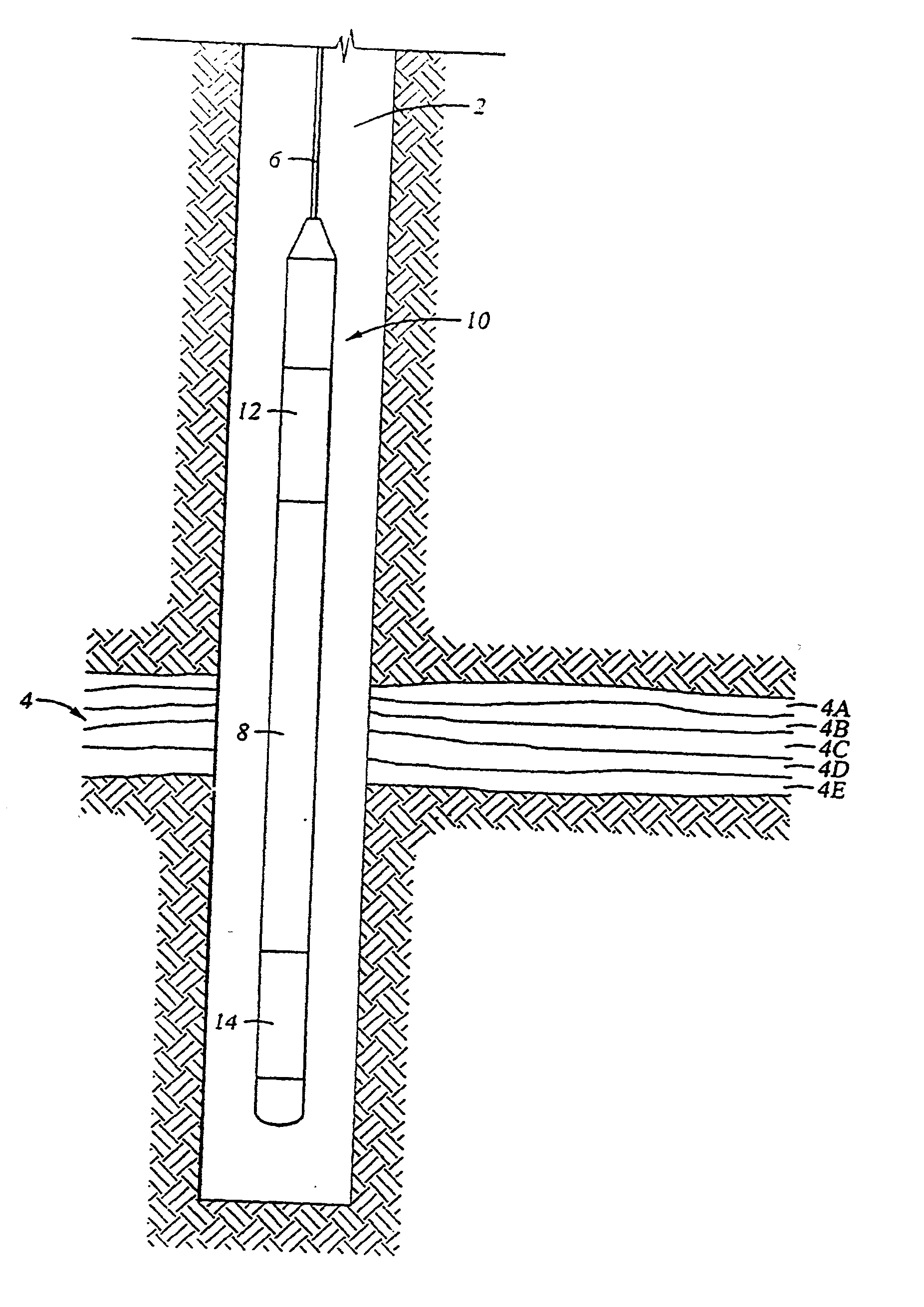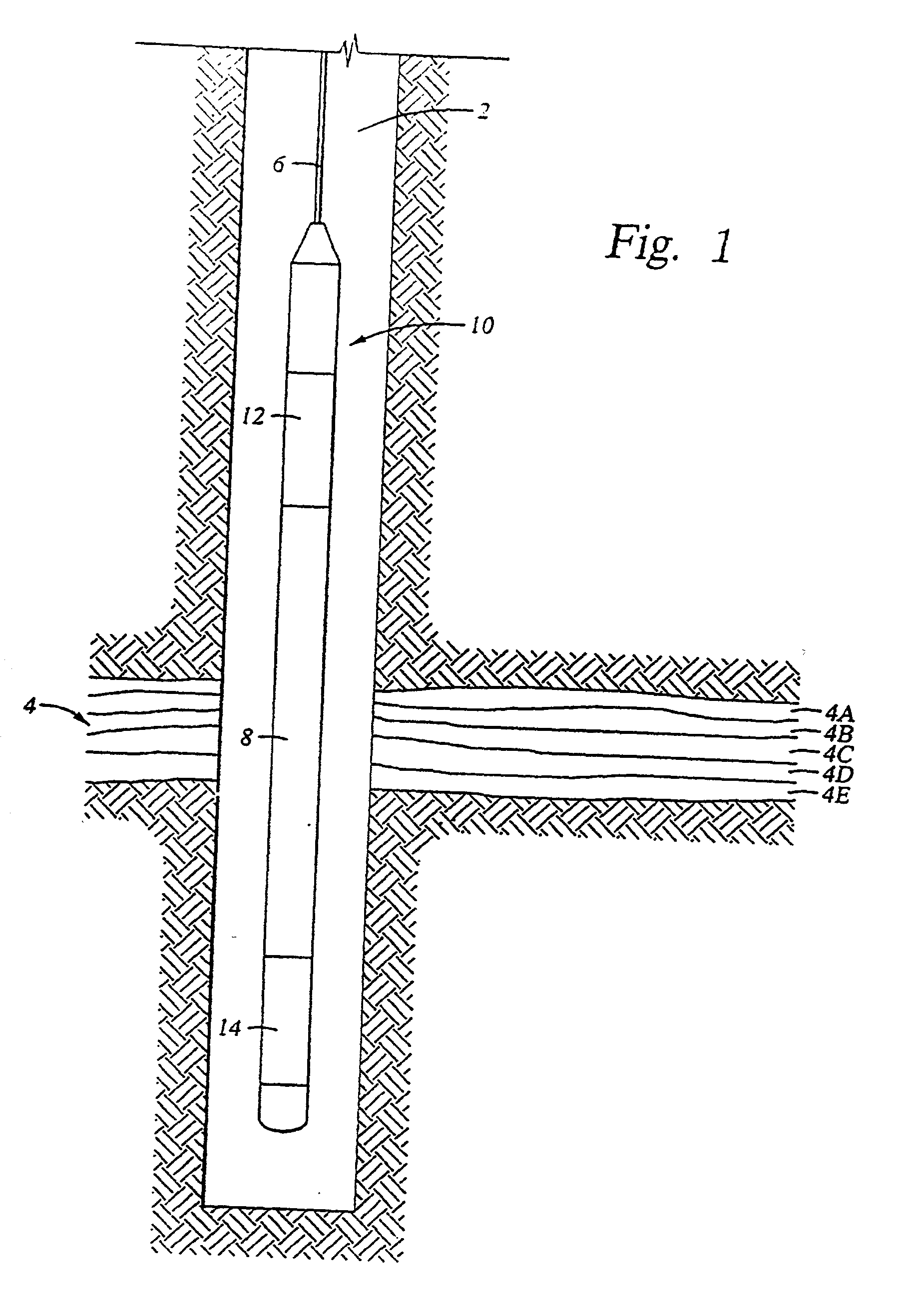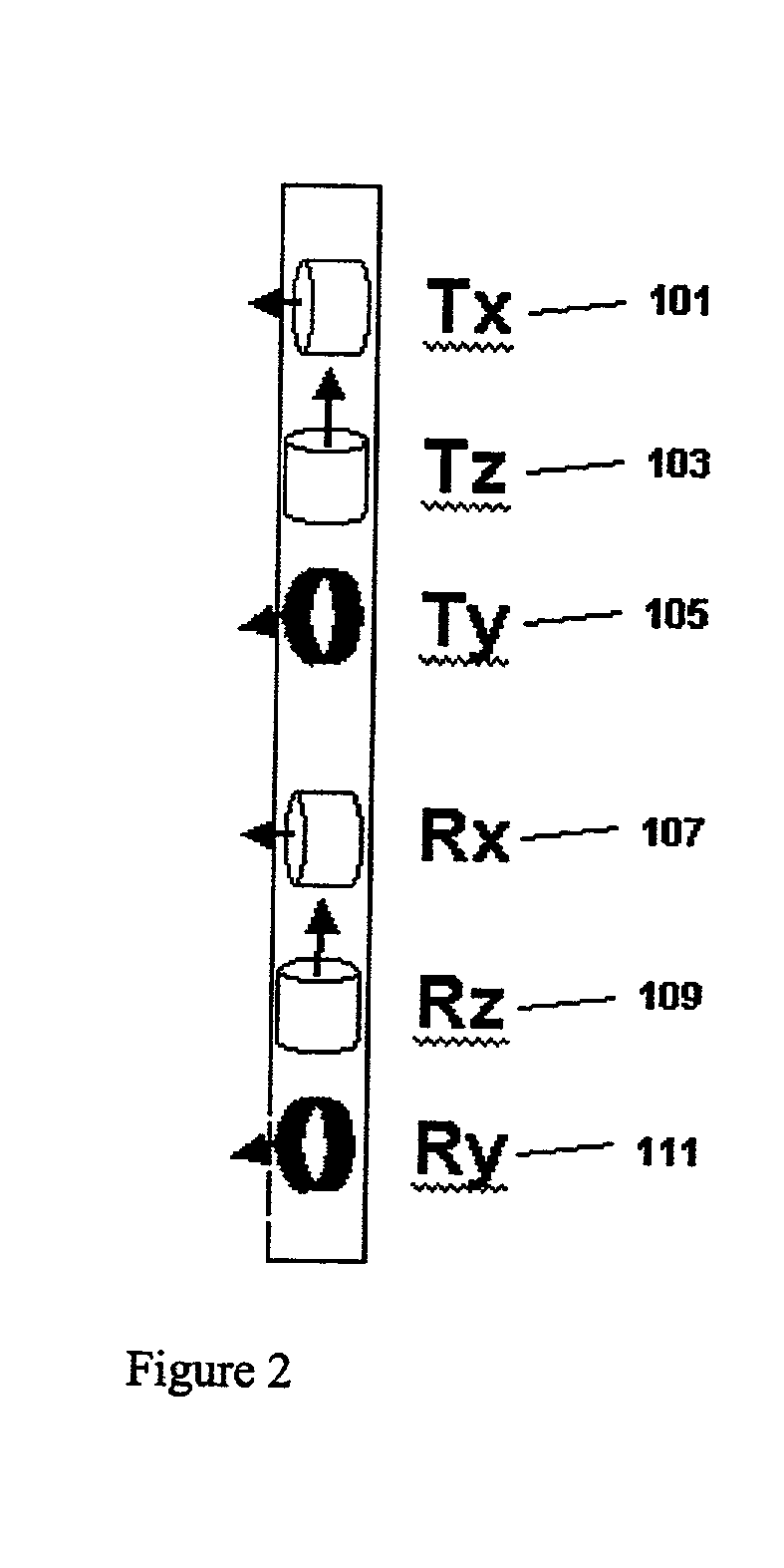Simultaneous determination of formation angles and anisotropic resistivity using multi-component induction logging data
- Summary
- Abstract
- Description
- Claims
- Application Information
AI Technical Summary
Problems solved by technology
Method used
Image
Examples
Embodiment Construction
[0079] The results of using the method of the present invention are illustrated by an example. FIG. 10 shows an example of a resistivity model in which there is a constant value of R.sub.v / R.sub.h of 2.0 as indicated by 208 in the right track. The left track shows the actual values of R.sub.v 203 and R.sub.h 205.
[0080] Synthetic data were generated for an inclination angle of 60.degree.. The curves 207 and 205 in FIG. 10 show the results of a inverting the synthetic model output wherein an incorrect inclination angle of 55.degree. was assumed and the inversion was limited to determination of the resistivity values only, i.e., the inclination angle was not included in the inversion process. The inversion was carried out using prior art methods. The curve 209 shows the determined value of R.sub.v / R.sub.h using the incorrect inclination angle. It is clear that not including the inclination angle in the inversion process leads to large errors in the inversion if a wrong value of the inc...
PUM
 Login to View More
Login to View More Abstract
Description
Claims
Application Information
 Login to View More
Login to View More - R&D
- Intellectual Property
- Life Sciences
- Materials
- Tech Scout
- Unparalleled Data Quality
- Higher Quality Content
- 60% Fewer Hallucinations
Browse by: Latest US Patents, China's latest patents, Technical Efficacy Thesaurus, Application Domain, Technology Topic, Popular Technical Reports.
© 2025 PatSnap. All rights reserved.Legal|Privacy policy|Modern Slavery Act Transparency Statement|Sitemap|About US| Contact US: help@patsnap.com



